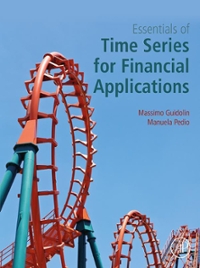Question
(12pts)Second-priceauction. There are 10 bidders. Each bidder i values the object at vi >0.The indices are chosen in a way so that v 1> v
(12pts)Second-priceauction.
There are 10 bidders. Each bidderivalues the object atvi>0.The indices are chosen in a way so
thatv1>v2>v10>0.
Each bidderican submit a bidbi0.The bidder whose bid is the highest wins the object. If there are multiple highest bids, then the winner is the bidder whose valuation is the highest (or whose index is the smallest) among the highest bidders. (For example, if bidder 3 and bidder 9 have the highest bid, then bidder 3 is the winner.)
The winner, say bidderi, gets a payoffvip, wherepis the highest bid made byotherbidders. Losing players all receive zero payoff.
(a) (3pts) Use the definition of Nash equilibrium to explain why(b1=v1+1,b2=v2,b3=v3,...,b10=v10), is a Nash equilibrium,
(b) (4pts) Is the profile(b3=v1+1 andbi=v6,fori=3) a Nash equilibrium? Explain your answer.
(c) (5pts) Can you find and verify all Nash equilibria in which player3wins the object?
(Hint: Need to find and verify all Nash AND show that other strategy profiles are not Nash. Look at the example we did in class where Player 2 was the winner: How high must Player 2's bid be? How low must other players' bids be? Use those observations and Part (b) to answer this question.)
Step by Step Solution
There are 3 Steps involved in it
Step: 1

Get Instant Access to Expert-Tailored Solutions
See step-by-step solutions with expert insights and AI powered tools for academic success
Step: 2

Step: 3

Ace Your Homework with AI
Get the answers you need in no time with our AI-driven, step-by-step assistance
Get Started


